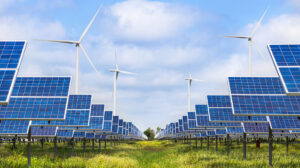Power
India is the world’s fifth-largest economy in nominal terms, behind the United States, China, Japan, and Germany, and one of the largest energy consumers.
Due to growing industrialization, urbanization, and rising incomes, India’s energy consumption is expected to increase three to four-fold in the coming decades. India is projected to be the largest contributor to additional global energy demand between 2020−2040. In comparison to other industrialized economies, India lags by $1−2 trillion in its energy infrastructure investment, which is likely to take place in the next 2−3 decades. Per capita electricity consumption in India is below global average, but total electricity demand is growing at 8-9% per year, projected to nearly double between 2020 and 2030. Given the warming temperatures and increasing willingness-to-pay, electricity demand for cooling appliances is projected to increase six-fold by 2040.
India’s anticipated energy demand growth has been accompanied by a deep reduction in clean energy technology costs, especially for wind turbines, solar PV cells, lithium-ion (Li-ion) batteries, and hydrogen electrolyzers.
Between 2010 and 2020, the global levelized cost of energy (LCOE) for solar and wind dropped over 80%. India saw the largest reduction in country-level solar LCOE, at 85%, and the average solar tariff in 2020 was 34% lower than the global weighted average due to innovative reverse auction design and other policies. India currently has over 130 GW of renewable capacity installed. At the United Nations Climate Change Conference of the Parties (COP-26) in Glasgow in November 2021, Prime Minister Modi announced that India would deploy 500 GW of non-fossil fuel power generation capacity by 2030.
In the past five years, India has added 55 GW of renewable capacity, 18 GW higher than coal-based power plants (27 GW) during the same duration. In 2020, investment in renewables surpassed investment in fossil fuels for the fifth consecutive year, albeit there are concerns about the capacity value of RE generation i.e. whether RE can generate electricity during peak load periods. However, coal still accounts for over 70% of electricity generation in India in 2020, with the country having some of the largest coal reserves in the world. Additionally, renewables are now cost-competitive with thermal power generation throughout India, even in regions previously considered resource poor for renewable generation. The cost of co-located solar and storage projects with approximately 2-4 hours of energy storage to meet evening peak demand is projected to be Rs. 3-4/kWh by 2030 — lower than the variable cost of nearly half (80-100 GW) of India’s existing coal capacity. Recent large-scale Round-The-Clock power and storage auctions by the Solar Energy Corporation of India (SECI) and National Thermal Power Corporation (NTPC) have demonstrated the cost effectiveness of energy storage in India. Our analysis has demonstrated that energy efficiency measures could avoid 40-50 GW of additional load during the evening peak hours.
IECC’s team has done extensive work on techno-economics of renewable energy, battery storage, least-cost resource mix for India’s growing load as well as policy and regulatory pathways for achieving 2030 targets. The team collaborates with India’s key government stakeholders, such as the Ministry of Power, Ministry of New & Renewable Energy, Central Electricity Regulatory Commission, the Forum of Regulators, Bureau of Energy Efficiency, etc.



